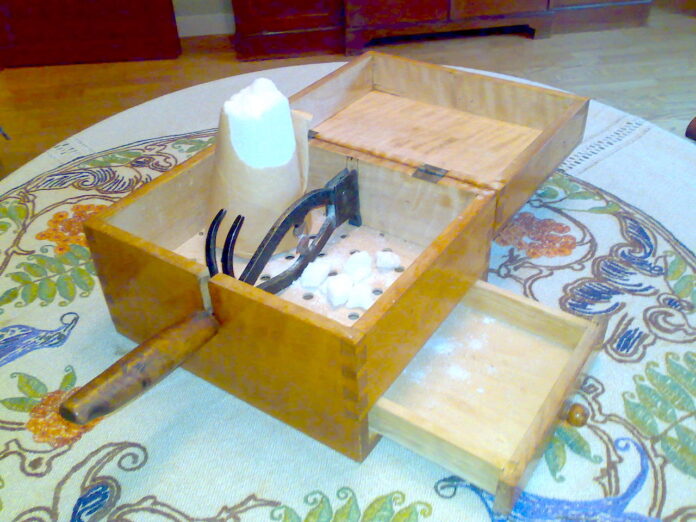Sugarloaf Key was once famously home to the Perky Bat Tower. In 1929, Richter Clyde Perky thought the wooden tower would become home to a colony of bats.
Perky was developing a fishing camp on the island and was hoping that that tower, and the bats that would call it home, would provide some much-needed pest control. Some species of bats feed on mosquitoes, and the buzzing black clouds of the blood-thirsty nuisances would provide an abundant food source.
To make a long story short, because this is not a story about the bat tower, Perky sent away for the construction plans, built it and attempted to introduce a colony of bats to their potential new home. The furry little flyers, however, had other ideas and flew off and away and presumably discovered a roost of their own. The tower stood for 88 years and served as one of the great not-quite roadside attractions in the Florida Keys until Hurricane Irma slammed the Keys and blew the structure to smithereens in 2017.
Sugarloaf Key was also once not quite as famously home to the community of Chase, Florida, and the Florida Keys Sponge & Fruit Company. In addition to developing a commercial sponge growing operation in the shallow bays surrounding some of the local islands, several hundred Key lime trees were planted. At some point, too, it is said that pineapples were also grown commercially on the island, but like the bat tower, this is not a story about the Florida Keys Sponge & Fruit Company – though it does have a little something to do with pineapples.
This story attempts to explore the origin of the name Sugarloaf Key. Some people say that the island is named for a cone-shaped Indian mound that once existed on the island’s east side, north of the Overseas Highway. Other people say that the name’s origin stems from the pineapples that were once grown on the island, and there is a pineapple connection. One of the nearly 40 varieties of pineapples is called the Sugarloaf.
The Sugarloaf pineapple is not the pineapple we find in local grocery stores, nor is it the one commonly seen growing in backyards up and down the island chain — including my own. Those yellow, juicy pineapples are a variety called Smooth Cayenne. The Sugarloaf is considered one of the sweetest varieties and bears a sweet white fruit that is low in acid and less fibrous than other pineapples.
Is there a connection between the Sugarloaf pineapple and Sugarloaf Key? It is an excellent question and one that I have heard asked repeatedly. The answer is both “yes” and “no.”
While there does seem to be a connection between the two uses of the word sugarloaf, it does not seem to be because pineapples were once commercially grown on the island but appears to be because of the sugarloaf.
The Merriam-Webster Dictionary defines sugarloaf as “refined sugar molded into a cone”. Before the invention of the sugar cube, refined sugar came in the form of a hardened cone that required tools like a hammer, tongs and a sugar crusher to create a spoonful. According to an often-told story, the history of the sugar cube dates back to Jacob Christoph Rad.
One day, his wife injured her hand while hammering off a chunk of the sugarloaf. Undoubtedly she was not the first to suffer such an injury. Perhaps while still wincing in pain, she told her husband that he should invent something better, and because he ran a sugar factory, he proved to be the right man for the job. Circa 1841, Rad invented the sugar cube.
Because of its sweetness, the Sugarloaf pineapple was named after the rock-hard sugar cone. How the word entered the local lexicon remains something of a mystery — at least to me. What seems pretty clear is that the name Sugarloaf Key has nothing to do with the pineapples reported to have once been commercially grown on the island.
It is generally agreed that pineapple farming in the Florida Keys began when Captain Ben Baker, a Key West wrecker, cleared land on Plantation Key and Key Largo and started the island chain’s first pineapple fields in the late 1850s. By the time the pineapple industry was first cultivated, Sugarloaf Key was already a place (and really a collection of islands known as the Sugarloaf Keys).
One of the earliest residents of the Sugarloaf Keys was an English settler named Asa Gilbert. He appeared on the 1830 U.S. Census as a resident of Sugarloaf and a family of one who was marked in the age bracket 50-60 years. In 1829, he received a jury summons but failed to arrive in Key West to serve because he did not have a boat to get there. When questioned, he produced a witness to testify that, in fact, he did not have a boat.
Gilbert did not appear on the 1840 census, but his documented presence reveals that the name Sugarloaf appeared prior to the arrival of the pineapple as a cash crop in the Keys. If it was not the pineapples, then the origin of the name might be the result of something cone-shaped that was found on the island, something like an Indian mound. Sugarloaf is not an uncommon name. Worldwide, more than 400 rocks, mountains and other cone-shaped formations bear the Sugarloaf name.























